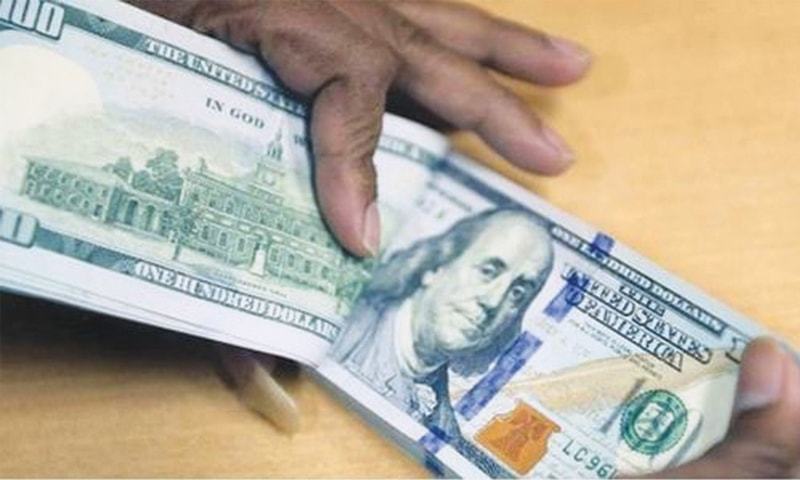News Analysis |
Pakistan and International Monetary Fund (IMF) have mutually decided to depreciate the Pakistani rupee against the US dollar after the first round of discussion with the Pakistani authorities.
The State Bank released a statement on Friday indicating the change in its exchange rate policy. It is of the view that “the exchange rate will continue to reflect the demand and supply conditions; and SBP stands ready to intervene, in case of speculative and/or momentary pressures emerge, for the smooth functioning of the foreign exchange market.”
The government uttered rhetoric of preserving higher spending on critical infrastructure, educational, and social programs, but failed to keep the public debt under a sustainable level.
SBP has also acknowledged that the high growth in imports led to a widening of current account deficit, and consequently to a depletion in the country’s foreign exchange reserves. But at the same time, it reflects upon the positive signs shown by some economic indicators over the last 3-months of this fiscal year, depicting that Pakistan’s economy is well positioned to achieve the real GDP growth target of 6 percent in 2017-18.
After absorbing pressure for years, the incumbent government has allowed the currency exchange rate to adjust to market conditions. Pakistani authorities were under relentless pressure for some time now to depreciate the rupee as the credible voices continued pressing the government to boost its exports and competitiveness. The government has been adamantly defending its stance, until last Friday.
Read more: State Bank of Pakistan performing despite obstructions
Pakistani economic conditions faced a barrage of criticism as some of the economic indicators depicted a bleak state of affairs and apparently bad economic management. Soaring twin deficit, weakening exports, artificially high exchange rate, plunging foreign reserves, ballooning external liabilities and fluctuating remittances challenged the government’s resolve in seriously managing the struggling economy.
The government hawks would argue now that weak currency will increase the cost of production, the price of external liabilities in the long-run and surge in inflation.
According to the IMF’s last report released in July, “external vulnerabilities have increased with a widening current account deficit and rising medium-term external repayment obligations linked to the China Pakistan Economic Corridor (CPEC) and other large investment projects”.
The soaring external debt and worsening trade deficit needed an adequate strategy to tackle the ongoing upheaval. The discussion with IMF required a policy that could bring Pakistan back to sanity with a more prudent measure to deal with the current problem, which could easily convert into full-blown crises if left unaddressed.
Pakistan has been in dire need of strategy, which could reduce the fiscal and budget deficit, and at the same time, it reduces the public debt to a respectable level.
Finally, when stubborn Ishaq Dar is receiving treatment for his ailing heart, the IMF has been able to convince the government to weaken the local currency which would help the beleaguered economy grow and somehow sustain the relentless pressure on payments. Otherwise, Dar has been a primary obstacle, which previously reversed the move.
Read more: Does the growth in FDI depict the true picture of Pakistan’s…
It has long been stated that the real value of the dollar is Rs. 120 and it has been hurting exports badly. Dr. Sajid Amin of SDPI has been a vocal advocate of the autonomy of the SBP and expressed his discontent with the dirty float and policy to keep the rupee artificially lower against the market forces of demand and supply.
The calculation of losses on exports is somewhat ambiguous, the independent economists and world-leading institutions like IMF have been advocating the depreciation in the rupee to boost exports.
Though, the calculation of losses on exports is somewhat ambiguous, the independent economists and world-leading institutions like IMF have been advocating the depreciation in the rupee to boost exports.
But, the government had other ideas. They believed that it might spike the external debt to an unsustainable level. It could potentially sabotage the economic indicators and have a profoundly negative impact on the government’s spotless economic performance.
Moreover, the government hawks would argue now that weak currency will increase the cost of production, the price of external liabilities in the long-run and surge in inflation.
It depends on how efficiently the debt money is used to improve the productive capacity of the country. Defending the government stance, Asad Zaman, the Vice Chancellor of PIDE (Pakistan Institute of Development Economics) argued, “it appears mysterious to laymen, high budget and BOP deficits, appropriately handled, are the drivers and engine of high growth.”
Read more: Pakistan facing ‘absolute scarcity’ of water: Severe implications
Pakistan has been in dire need of strategy, which could reduce the fiscal and budget deficit, and at the same time, it reduces the public debt to a respectable level.
Since most of these loans are used to meet the budgetary needs, it augmented the burden of government. For example, about half of the $17 billion loans acquired were utilized to repay the country’s total external debt and liabilities, reported Shahbaz Rana for Express Tribune.
The government uttered rhetoric of preserving higher spending on critical infrastructure, educational, and social programs, but failed to keep the public debt under a sustainable level. With the expected depreciation of the rupee, the external debt position will deteriorate further. Will the government allow the rupee to plunge to Rs. 120? Or dirty float will make a re-entry? Will it take the risk on the short-run fiscal position, which may put the next general elections on a stake, if exports fail to improve as expected? It is a catch-22 situation for the government, it appears that unless exports do not improve drastically, crises await.













